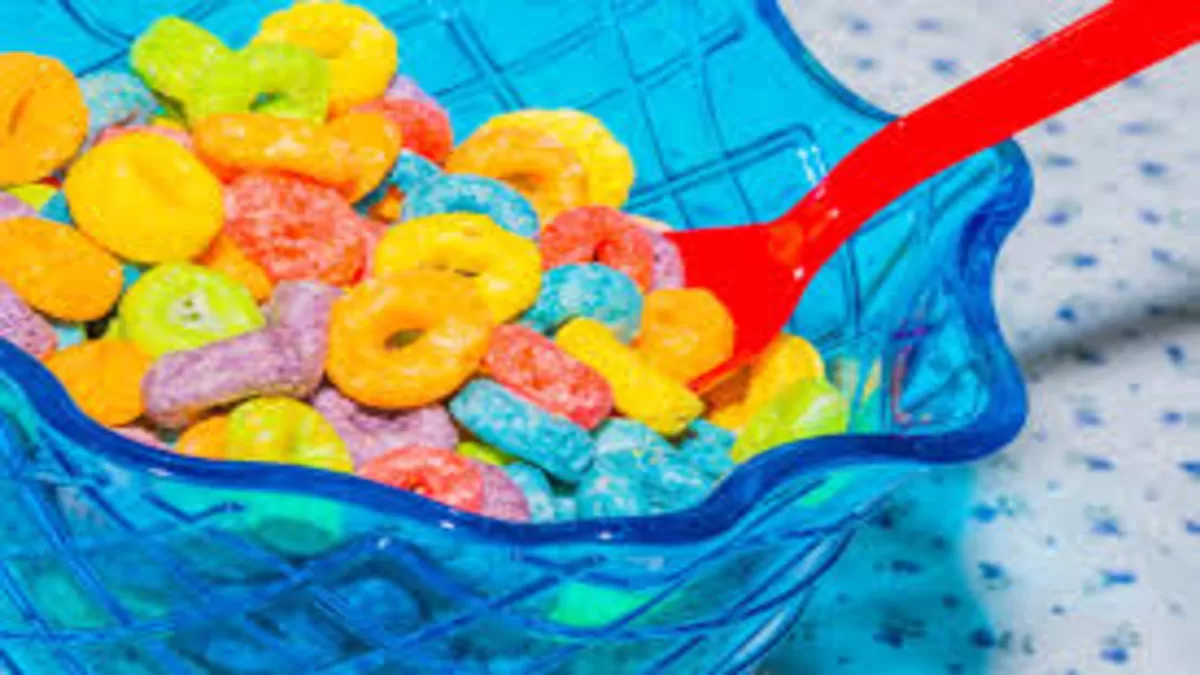Kellogg’s faces protests over food dyes in popular breakfast cereals – ABC News
Kellogg, one of the world’s largest food companies, is facing growing criticism over the use of artificial food dyes in some of its most popular breakfast cereals, including Froot Loops and Apple Jacks. On October 18, 2024, protests erupted outside the company’s Michigan headquarters, as health advocates and concerned parents demanded the removal of synthetic dyes from Kellogg’s products in the United States. This comes after the company previously committed to eliminating these dyes back in 2015, a promise that has not been fully delivered.
The focus of the protests is on artificial dyes like Red No. 40 and Yellow No. 5, which are still widely used in the U.S. but have been removed from the same products in other countries, including Canada. In Canada, Kellogg’s Froot Loops is now colored using natural dyes like concentrated fruit and vegetable juices, while the U.S. version continues to rely on synthetic alternatives. These artificial dyes have been associated with various health concerns, including behavioral problems in children and potential cancer risks in animal studies.
The California School Food Safety Act, which was signed into law in September 2024, has added fuel to the debate. The new law, set to take effect in 2027, will ban public schools in the state from serving foods containing several artificial dyes, including the ones used by Kellogg. California’s move has reignited national conversations about food safety, particularly regarding children’s exposure to synthetic additives.
Eva Mendes, a well-known actress and health advocate, played a key role in promoting the protests on social media. She shared her concerns with her nearly 7 million Instagram followers, explaining that she grew up eating cereal but now avoids Kellogg’s products because of the harmful ingredients they contain. Mendes also urged her followers to support a petition led by Vani Hari, also known as the “Food Babe,” calling for Kellogg to eliminate artificial dyes and preservatives like butylated hydroxytoluene (BHT), which some studies suggest may interfere with the body’s hormonal systems.
Kellogg has responded to the backlash by stating that its products are safe to eat and meet all federal safety standards set by the U.S. Food and Drug Administration (FDA). A company spokesperson emphasized that the safety and quality of Kellogg’s foods remain a top priority and pointed out that the company is committed to transparency in labeling. However, critics argue that meeting federal standards does not necessarily mean the products are safe, as some dyes have not been fully re-evaluated for decades despite newer research highlighting potential risks.
Artificial food dyes have been used in processed foods for decades, primarily to enhance the appearance of products and make them more appealing to consumers, particularly children. Dyes like Red No. 40, Yellow No. 5, and Blue No. 1 are derived from petroleum products, making them synthetically produced rather than naturally sourced. They are used in a wide variety of items, including cereals, candies, beverages, baked goods, and even medications.
While the FDA has approved these dyes as safe within certain consumption limits, a growing body of scientific research suggests that they may be harmful to human health. For example, Red No. 40, one of the most widely used artificial dyes, has been linked to behavioral issues such as hyperactivity in children. Some animal studies have also indicated a potential link between these dyes and cancer, although definitive human studies are lacking.
In 2021, the California Office of Environmental Health Hazard Assessment published a comprehensive report based on data from both animal and human studies, highlighting concerns about artificial food dyes. The report found that a significant number of studies demonstrated a connection between these dyes and hyperactivity in children. In addition, some research suggests that synthetic dyes could trigger inflammatory bowel diseases and may cause DNA damage, raising alarms about long-term health consequences.
Despite the mounting evidence, the FDA maintains that artificial food dyes are safe for consumption at what they call “acceptable daily intake” levels. These levels are based on the assumption that the dyes can be consumed daily throughout a person’s lifetime without causing adverse effects. However, critics like Dr. Jamie Alan, an associate professor at Michigan State University, argue that the FDA’s standards are outdated and do not reflect recent research showing the potential dangers of these additives. Alan also notes that some artificial dyes, such as Red No. 3, have already been banned from use in cosmetics due to health risks but are still allowed in food products.
Other countries have taken a more cautious approach to artificial dyes. In the European Union, for example, products containing certain artificial dyes must carry warning labels indicating that they may affect children’s behavior. These regulations have led many manufacturers to switch to natural alternatives in those markets. However, in the U.S., similar warnings are not required, and the use of synthetic dyes remains widespread.
As the debate continues, consumers are becoming increasingly aware of the potential health risks associated with artificial food dyes. Health advocates are urging people to read food labels carefully and consider choosing products made with natural ingredients. For now, it remains to be seen whether Kellogg will respond to the growing pressure and remove artificial dyes from its U.S. products, as it has done in other countries. Until then, the controversy surrounding these additives is unlikely to die down, especially as more consumers and lawmakers call for stricter food safety regulations.
#FoodSafety #ArtificialDyes #HealthyEating #KelloggProtests #KidsHealth
